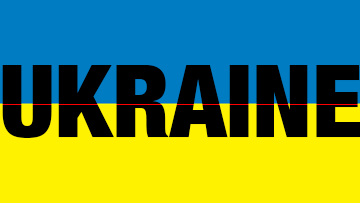Juan Gonzalez for Democracy Now!
Speaking from Johannesburg, leading anti-apartheid activist and former South African Intelligence Minister Ronnie Kasrils discusses the evolution of the African National Congress’ economic views from its time as a liberation movement to leading South Africa after the fall of apartheid. Kasrils says the ANC was forced to make a “Faustian pact” with neoliberalism in order to bring apartheid to an end and avoid civil war. He also discusses recent reports that Mandela was a member of the South African Communist Party. Kasrils was on the National Executive Committee of the ANC for 20 years, serving as minister for intelligence services from 2004 to 2008.
Click here to watch part 1 of this interview.
This is a rush transcript. Copy may not be in its final form.
JUAN GONZÁLEZ: Ronnie Kasrils, you mentioned this whole dynamic of those few white South Africans who joined with or became part of the ANC. I’m wondering how extensive was the involvement of white revolutionaries and radicals in the movement. Did you have the kind of tensions within the ANC that obviously developed in the United States and other parts of the world as the Black Power or Black Consciousness Movement developed? Were there splits that began developing between the white comrades and the African or black comrades? And how did you work those out?
RONNIE KASRILS: OK, I think there’s quite a lot of similarities, to a degree—obviously, no places are the same—between America’s experience—and I’m thinking of the Deep South, the struggle against slavery and for civil rights and those experiences of African Americans that I’ve referred to that faced people in South Africa.
And then, in terms of the nonracial nature of the struggle, the numbers of whites who became involved were really few. They were exceptional people, people of great quality and education and bravery, like Bram Fischer and Ruth First or Joe Slovo. They had been in the Communist Party, which started off in the 1920s as basically a—basically white involvement of a few hundred people. It was never big. And they tended to come from the British trade union movement, on the one hand, and, as in America, as immigrants out of Eastern Europe, and particularly Tsarist Russia, a lot of Jewish people who had some background with the Mensheviks or the Bolsheviks or the Jewish Bund of the Russian Empire. So, it was a party that starts off that way.
But by the ’30s and the ’40s, with the large influx of black workers, it begins to change. And black workers, like Moses Kotane, J.B. Marks, Duma Nokwe, come to the fore. They also are African nationalists. And the thing is, they were able to also be members and became leaders, with the likes of nationalists like Mandela and Tambo of the African National Congress. So, initially, in the period of the ’40s and into the ’50s, there was quite a lot of tension. And Mandela is a perfect example or reflection of this. As an African nationalist, he is a bit weary of the communists, and particularly those with the white skin. He regards Marxism in that early period as something that’s outside of Africa, and therefore foreign. And he’s very typical of African nationalism with those particular fears. There’s a white Liberal Party led by Alan Paton that tends to be anti-communist, that is not as active as the white communists and, in terms of its goals, doesn’t even accept full universal franchise. So, as the African National Congress, under Mandela and Tambo, into the ’50s begins to become very active, highly militant, and mobilizes by the tens of thousands, the African people of whom huge percentage tends to be people from labor, working-class people, and so the character of that African National Congress and its leaders, like Mandela, begins to change.
And the big error that Afrikaans nationalism makes is that it deals with the communists, black or white, and the nationalists, the African nationalists, in the same way, and they repressed, and they banned, and they house-arrested, and they imprisoned. So, the two come together. I—instead of going for the black-white race aspect, let’s think of South Africa as having two deep cleavages: that of race, the black-white divide, and that of class, capital and labor. And these two divides—one which gives rise to trade unions, to socialists and the Communist Party; the other, the race divide or national oppression of black people—gives rise to the African nationalism, under the repression of apartheid and backed up by its courts and jails and judges and, of course, the brutality of its police and army. So the two cleavages—the divides and those who reflect them—come closer together. And I would say that’s a period when Mandela casts off his suspicion of the communists and even an element of anti-communism, and a tremendous unity emerges in the struggle of the ’50s.
SHOW FULL TRANSCRIPT ›









